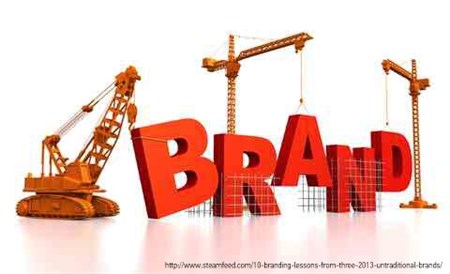Personal Branding: The Key to Success
Many years ago, major companies realized the impact brands have on customers. Brands not only define a company’s image, they are an integral part of boosting products and revenues.
Today, good branding still provides the same benefits, but on a larger, global scale. Branding helps us recognize a company’s name by using an image, color or slogan. We see gold arches and immediately think McDonald’s, we hear “Just Do It” and think Nike, and in Dubai, holding up the first three fingers together symbolized Sheikh Mohamad’s way of telling people “win, victory and love.”
Personal brands have the same impact and power as company brands. Finding the right brand for you will give you an advantage in your professional life and help expand your network.
Personal Branding

Just as companies grow their brand, employees, executives, entrepreneurs and consultants feel the need to do the same for themselves.
The emergence of new communication tools, and the massive impact of social media have made personal branding even more imperative.
Personal branding is primarily intended to allow us to develop clear communication about our identity, so that we can stand out from our competitors and peers.
This is an approach that is essential for anyone who wants to promote their professional project, expertise and develop their reputation.
We all must find ways to stand out from the crowd. Building our personal brands will help us leverage our strengths and get noticed.
Tips for Improving Your Personal Brand
By following some simple steps, you will learn to know yourself better, and therefore, better showcase and communicate what makes you truly unique and marketable.
- Create your personal vision, and list the steps towards achieving that vision.
- Define your target audience. Knowing the exact person you’re “selling” to makes it easier for you to communicate your brand message.
- Build your online and offline assets. Online assets are things like your website and blog, your Twitter username and your LinkedIn profile. Offline assets are things like business cards and newsletters.
- Build your brand through outreach. Your website and blog act as the hub of your personal branding efforts, but to build your brand and move toward your professional goals, you need to go where your target audience is and get their attention.
- Try to get free press coverage. This can be challenging, but doing things like giving a free seminar or writing an article for a magazine can increase your exposure.
- Monitor how your name appears in search rankings and search engines and always keep your website and social profiles updated.
- Be yourself, everyone else is taken! Create a list and prioritize all of the things that make you unique.
Conclusion
It is obvious that good branding is a central piece of a company’s marketing strategy. But, personal branding is just as important and can sometimes be overlooked.
Identify what differentiates you from the crowd of your competitors and peers and leverage those things as strengths. If you are a wizard at financial analysis, an expert public speaker, or an SEO genius, highlight those skills. Market yourself by amplifying what traits you possess, what successes you have had and the lessons you have learned. Be creative, professional and unique.
Define your goals and identify your target audience. Create your brand based on what you want to accomplish and get your personal brand noticed. Social media, like Twitter, LinkedIn and Facebook, are excellent platforms to grow your network and brand.
Further Resources on Global Branding and Translation Services
GPI has provided extensive language translation services across many industries worldwide. In addition, GPI has developed a user-friendly translation portal that makes it extremely easy for non-technical users to submit projects for translation.
You will find the links below to some of our services and a blog on global tourism translation issues highly useful:
